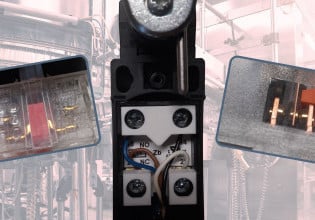Reduce Noise And Increase Efficiency With New Emerson Valve Trim Tech
Emerson tackles valve noise and turbulent flow with carefully engineered and additively manufactured valve trim modules to maintain flow rate while reducing energy loss.
Valves control the flow of gases or liquids in pipes. Typically, a valve is used to simply permit or deny the flow of product in a single direction, but some valves are also used to control the amount of flow passing through the valve for variable-speed actuators.
Globe And Rotary Valves
A globe valve is a design with two halves separated by a small passage in the center. When the operator turns the valve wheel, a movable plug enters or exits the passageway, slowly changing the flow of fluid permitted through the body of the valve.
A rotary valve contains a central, rotating plug that decreases or opens passages into the valve body as the handle is rotated.
These valves, while very effective at precisely controlling flow through pipes, can cause vibrations, disturbances in the medium, and excessive noise due to large pressure drops across the valves in their partially-opened position. Various methods of trimming valves have existed for many years, but reducing the noise and vibration usually also results in a significant loss in flow rate capacity.
Emerson has recently released the Fisher™ Whisper™ Trim technology, a version of the globe valve and rotary valve that promises quieter function and better efficiency.

The internal trim components of the new Emerson rotary and globe valves, the NXV and NXG, respectively. Image used courtesy of Emerson
Causes Of Valve Noise
Valve noise can be a very serious issue, especially if the operator’s safety is in danger. There are a few main factors that lead to valve noise.
Turbulent flow: when a gas or liquid enters a valve and the flow is restricted, the laminar flow is disrupted. Turbulent flow introduces gas vapor bubbles in liquid and much of the fluid energy is transferred to the pipes and components, affecting process mediums, measurement devices, and even the process itself.
Mechanical vibrations: Just like waves in a pool, vibrations from mechanical devices can cause vibrations to liquids and gasses inside pipes or valve bodies. This noise can be amplified and heard around the plant.
Cavitation: When a liquid is brought near the vapor point, small bubbles form within the liquid. When they burst, a cavity is formed and liquid pours in to fill it extremely quickly. This process can result in a lot of excessive noise and can damage the pumps, valves, and sensors.
Fisher Whisper Trim Technology
In an effort to reduce valve noise, Emerson has taken advantage of additive manufacturing technology (metal sintering) and created a trim cage for globe and rotary valves. The specialty-designed trim cages allow the incoming fluids to expand and depressurize in the center of the valve body, reducing the large pressure drops while passing through the components and virtually eliminating cavitation.

The Emerson NXG cutaway in the half-open position to illustrate flow. Image used courtesy of Emerson
Fisher Whisper NXG
The NXG is designed for global valves, compatible with gas, vapor, or steam, and works with NPS and DN standard valve sizes. The NXG promises a reduction of 30 dBA over conventional valves of the same size. Oversized valves are traditionally often chosen to reduce valve noise but with the new NXG trim promising a 20% increase in capacity, smaller-sized valves can be selected.
Fisher Whisper NXV
The NXV is designed for rotary valves is also compatible with gas, vapor, or steam, and is made of 316L stainless steel. The NXV can fit in NPS 4, NPS 6, or NPS 8 valve sizes and is available in 150, 300, and 600 ASME pressure classes. Similar to the NXG, a 20 dBA sound reduction can be expected from using the specialty-designed trim.
Emerson's new valve design also accounts for unique flow passages to reduce turbulent flow and minimize shock near the body of the valve. By using additive technology, Emerson can reduce jet structure limitation and maximize the efficiency of the valve, reducing the energy lost to turbulence and noise within industrial processes.






